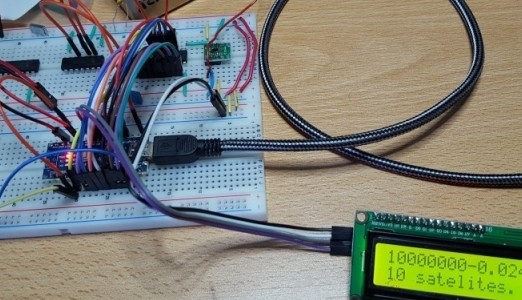Build a High Precision 10 MHz Frequency Reference
June 14, 2016
on
on

Any frequency meter is only as accurate as its timebase. Unfortunately, a high-precision timebase is expensive which is why many commercial frequency meters a.k.a. counters use quartz crystal standards for this important task.
Some of these meters have an external 10 MHz reference input that can be used to improve their precision. All you have to do is to devise and connect a high-precision 10 MHz signal and away you go. But how do you calibrate your high-precision reference? Errm…
Here is a calibration method that makes use of the 1 Hz (1 pps) output pulse available on many GPS receivers. The frequency is low, but so is the jitter, usually less than 10 ns. With this signal the output frequency of an oven-controlled crystal oscillator can be measured and adjusted precisely to obtain a 10 MHz reference with an accuracy of 0.005 Hz.
Read more on Elektor Labs…
Some of these meters have an external 10 MHz reference input that can be used to improve their precision. All you have to do is to devise and connect a high-precision 10 MHz signal and away you go. But how do you calibrate your high-precision reference? Errm…
Here is a calibration method that makes use of the 1 Hz (1 pps) output pulse available on many GPS receivers. The frequency is low, but so is the jitter, usually less than 10 ns. With this signal the output frequency of an oven-controlled crystal oscillator can be measured and adjusted precisely to obtain a 10 MHz reference with an accuracy of 0.005 Hz.
Read more on Elektor Labs…
Read full article
Hide full article


Discussion (0 comments)